Reliable and high-speed internet connectivity is pivotal in this age of the digitally-driven world. However, understanding the workings of internet infrastructure can often feel overwhelming. One such common point of confusion arises in the form of determining the scope of an Optical Network Terminal’s (ONT) functionality, and how it relates to a modem, router, or other similar devices. What does an ONT do? Does one still need a modem or router in conjunction with an ONT? With the help of this article, you will be able to answer these questions logically and learn how ONTs operate alongside fiber-optic internet systems. The guide will ultimately be able to aid you in seamlessly networking your home or office. No matter if you’re upgrading your internet or solving issues related to connectivity, this information will put you one step closer to empowering yourself to make the right decisions.
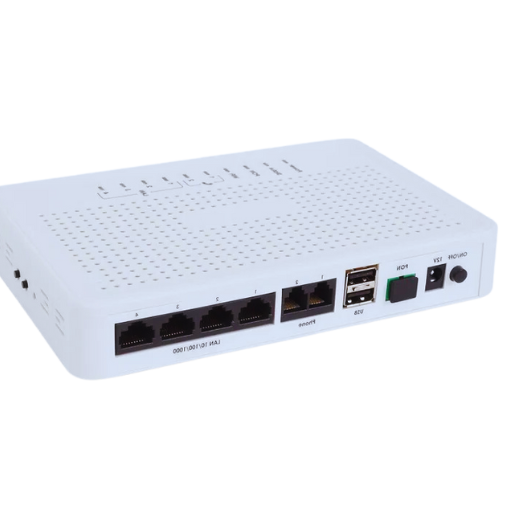
The Optical Network Terminal (ONT) is an external device in the fiber-internet system that links your home or business place to the telecom network of the service provider. The ONT’s function is changing the optical signal sent through the fiber optic wires from the internet service provider into an electrical signal that your local components can understand. Generally, an ONT is the último or last electrical device in a telecommunication network that gets the signal through the optic fibers, generates the electrical signal, and communicates to the computer or local initiated signal. Apart from the fact that the ONT is fundamental in initiating the fiber optic internet link, a router is still necessary for the provision of a wireless or multi-device connection within the space.
An Optical Network Terminal (ONT) transmutes fiber-optic signals given by an internet service provider into usable data for different devices in a network. It serves as a bridge between the fiber infrastructure and any home or business network. The ONT handles the incoming light signals by transforming them into electrical signals and transmitting these signals to the router or directly to the connected devices. Simultaneously, it changes the outgoing electrical signals from the network into light signals to be sent back through the fiber link. The conversion of these signals ensures faultless communication throughout the datacom infrastructure. This transceiving communication guarantees efficiency and integrity in the transmission of data.
The Optical Network Terminal (ONT) is used in both residential and business settings, and its block diagram design generally has two parts: functional units that convert data to be managed, processed, and transmitted between the user’s local network and fiber network facilities for division and integrated circuitry at the fiber network subsystems level relay them into a certain subsystem and an ic. Below is the list of these components along with their description: “Optical Receiver and Transmitter Combination”.
Transceiver Module Optics With the patented design of optical fiber bundle interfaces for use in optic telecommunication networks, electric signals are converted into optic signals for asynchronous transmission. For the developed systems that transmit light to intelligent networks and away from networks that receive light, implemented units are put forth which allow the changing of electrical signal into a light signal and the reverse. Advanced transceiver units can achieve transmit speeds of 1G, 10G or even greater, based on the class of GPON/XGS-PON/… etc.
PON Interface The Passive Optical Network (PON) that is integrated into Open Systems is located outside the user premise, at the Optical Line Terminal (OLT) of the service provider. It interfaces with a front relay board, which controls a multiplexer (or demultiplexer) responsible for combining signals from different users so that they can be transmitted over a single fiber line. TDM is one of the techniques commonly used to guarantee that resources can be shared.
MAC (Media Access Control) Layer
The MAC layer manages the communication between devices and the network to control the flow of data. This layer utilizes bandwidth effectively and avoids collisions. The MAC layer also includes frame definition and coding, error checking, and even communication encryption support using the AES algorithm.
CPU/Processor
The ONT’s CPU controls all processes within the Ontrol device, which includes monitoring communication protocols and following network commands sent to the Ontrol device. Newer models of ONTs integrate more advanced chipsets that are specifically designed for networking so that they can more efficiently cope with soaring data volumes.
Memory Modules
Memory is where system configurations, firmware, and other processing data are temporarily stored. ONTs typically utilize both RAM and flash memory, for example, to enhance the overall performance of devices on the local network. Optical fiber infrastructure provides enhanced data throughput, especially with supported high-capacity RAM, which is ideal for high-speed connections.
Ethernet Interfaces
ONT devices have one or more Ethernet LAN ports which allow the direct connection of routers, switches, and even computers. These ports also have various speed support, which may be 1 Gbps or 10 Gbps. Like all Ethernet interfaces, the ONT ports also support VLAN tagging that allows prioritization of traffic for some applications, video conferencing, VoIP, and streaming videos.
Power Management Unit (PMU)
The Power Management Unit (PMU) guarantees that the electrical power supplied within the ONT remains stable. It is composed of voltage regulators while managing the fluctuating power with protection circuitry so that the ONT and its connected peripherals stay safe.
LED Indicators for monitoring the status of devices on your local network.
ONTs consist of LED indicators that show the state of the device including, but not limited to, powered on, network connection, and errors. Moreover, these LEDs help in troubleshooting connection issues within the local network in a timely fashion.
Example Performance Insights for news networks.
Typical modern ONTs used for XGS-PON networks support an approximate download and upload speed of 10Gbps with an ideal power latency of 1ms. Moreover, power consumption is efficient at 3 to 7 watts which is economical while maintaining a required performance level. Transmission is secured by AES-128/256 encryption that cripples unauthorized access and is needed especially in an enterprise environment.
ONTs are essential as improved networking protocol hardware defines reliable high-speed Internet services for domestic and industrial use. Knowing their components facilitates better diagnostics, configuration, and optimization of the network.
An Optical Network Terminal (ONT) is an essential element within a full fiber optic network as it is the final piece of hardware that converts light signals to electrical signals to send voice, video, and data communications to subscribers. Today’s ONTs that serve as terminals on the optical fiber network work proactively in multifunctional ways that enhance performance, security, and compatibility with a variety of networking standards.
Supported Bandwidth and Speeds
ONT devices provide symmetrical bandwidth. For example, several ONTs give symmetrical up to 1 Gbps internet speed while advanced models offer even 10 Gbps internet speed to optimize the accommodation of various exceedingly high-speed internet services. This is particularly useful with high bandwidth consumers like 4K Dolby video streaming, online gaming, and cloud computing by enterprises.
Port Configuration
Most fiber optics ONTs come with several 1 to 10 Gbps Ethernet ports. In addition, most units are wireless LAN and voice-over IP (VoIP) enabled and have RJ-11 to plug in traditional phone lines. With these configurations, ONTs guarantee optimal performance with several concurrent devices connected.
Adherence to GPON and XGS-PON Standards
ONTs practice networking compliance with GPON standards, such as Gigabit Passive Optical Network, and the more recent XGS-PON, or 10 Gigabit Symmetrical Passive Optical Network. For example, XGS-PON was created with next-generation networks in mind and allows for faster speed, greater scalability, and improved energy efficiency. These standards guarantee compatibility with service provider’s networks and ensure users can switch between vendors without problems.
Power Consumption and Battery Backup
Modern ONTs also feature improved energy efficiency. Many of these devices include battery backup capability that provides service during short power outage periods, allowing services such as voice communication and internet access to operate continuously.
Security Features
Data protection and secure communication for ONTs is achieved through the use of encryption and stringent authentication techniques such as AES, or Advanced Encryption Standard. This is vital for the integrity and privacy of data, especially in enterprise networks that transmit sensitive information.
Scalability and Future-Proofing
ONTs have been built with future bandwidth and service needs in mind. There will be an increased need for high-quality home and business broadband service with the advent of 5G and IoT technologies. These advanced ONTs can meet these changing requirements by providing integration with new technologies as well as a growth-friendly design.
Knowledgeable users and network specialists who comprehend the details and scope of functionalities of ONTs’ components and features are able to make sound choices about the implementation of dependable and economical fiber optic networks that meet today’s needs and those of the future.
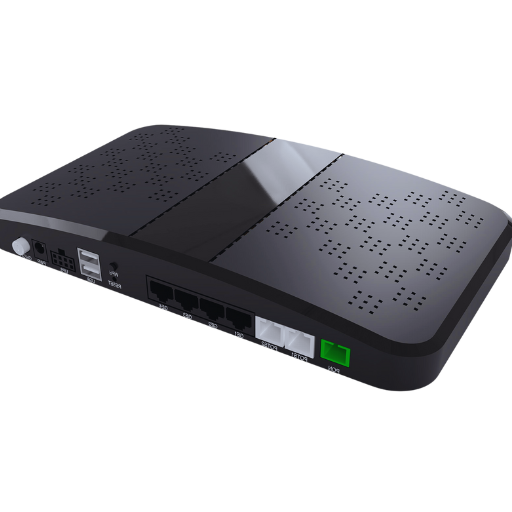
The necessity of a modem in addition to an Optical Network Terminal(ONT) largely relies on the specific configuration of your internet connection together with the service offered by the Internet Service Provider (ISP). An ONT converts fiber optic signals into Ethernet data and can send the data directly to the router. A modem can be useful in certain circumstances, however.
New research indicates that nearly a quarter of US households still subscribe to cable internet, while over seven percent depend on DSL. These customers, along with many others, will usually require a modem, unlike an increasing portion of subscribers to fiber optic internet. It is possible to systematically analyze your modem, type of service, and other equipment to determine if a modem would suit your network needs.
The fiber-optic internet doesn’t require a modem because data can be transferred straight to your home through an Optical Network Terminal (ONT) using light. The OPNT is a communication endpoint device that connects the fiber-optic network to your home network. Hence, it connects the two and removes the need for a modem. Unlike a modem for cable or DSL services, ONT does not convert signals; rather, it transforms light pulses into usable data. Therefore, you only need a router that serves the internet connection to different locations in your house. All these reasons contribute to making fiber internet faster, more reliable, and less interoperable than more hardware.
With an ONT, there is no need for a modem with a fiber-optic internet connection. The modem’s function of converting fiber signals to data which can be used is performed by the ONT. The router, alternatively, is important for creating a wireless network in the house. It connects to the ONT and splits the internet connection to multiple devices wirelessly and through Ethernet cables. The combination of these devices eliminates the need for a modem which can enhance the network setup’s functionality and its organization.
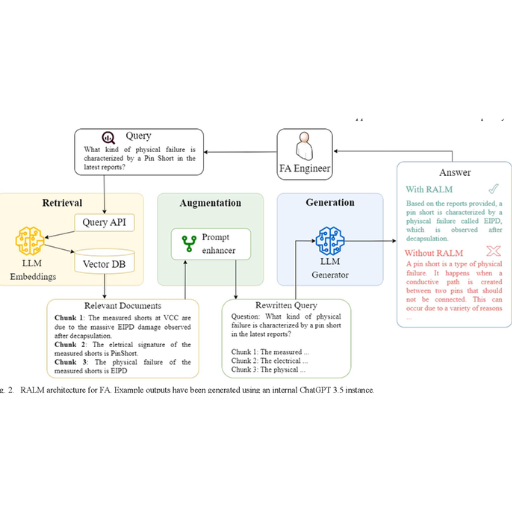
In a scenario where the user has an Optical Network Terminal (ONT), it usually comes integrated with several Ethernet ports which facilitate direct and effective wired connection to the ONT. The ports are built to support gigabit ports and are therefore ideal for various devices like desktop computers, gaming consoles, and even smart TVs, which need stable and high-speed connections. Ethernet cables, typically Cat5e or Cat6, are used to plug the ONT to any device making it effortless to help utilize these ports further.
ONTs sold by most Internet Service Providers (ISPs) come with a recommended minimum of 1 Gigabit Ethernet port. However, newer models are believed to have a higher number of ports to cater to more sophisticated networking configurations. The data transfer rates through the ports are estimated to be around 1 Gigabit per second (Gbps) or more, which varies depending on the ISP offer and capabilities of the hardware. Advanced configurations can be paired with a network switch allowing the Ethernet ports to support more than one device under the high-speed internet simultaneously.
To achieve lesser latency and minimization of errors, it is best to ensure that only high-quality Ethernet cables are used, especially when the distance is farther. Furthermore, the device compatibility along with the firmware updates concerning the ONT need to be checked frequently to allow operation in the safest state while having better performance.
Establishing a home Local Area Network (LAN) requires particular steps to be followed to ensure performance and security. The considerations and components outlined below need the utmost attention while constructing a well-configured and robust network.
1. Choosing the Switches and Routers
Purchase high-speed routers that support Wi-Fi 6 or Wi-Fi 6 E as these have more improved range, capacity, speed, and lower latency as compared to earlier versions. For cabled connections, make sure to provide a Gigabit Ethernet switch that allows fast data transfers between devices. Purchase routers and switches higher tier goods that allow features like Quality of Service (QoS) that manage the allocation of bandwidth to different applications.
2. Network Layout Design
Lay out the design for the network according to the distance from the wired devices. A star topology is most commonly employed for home networks as devices connect to a central router or switch. For Multi-story homes, powerline adaptors or mesh Wi-Fi systems allow for consistent coverage in areas where traditional Wi-Fi signals or direct cables from routers become weaker.
3. Allocation of the IP Addresses
Set your router to facilitate DHCP configuration options to automatically assign IP addresses. Alternatively, critical devices such as servers and NAS devices can utilize static IP addresses to maintain proper communication within the network. Most recent routers can help you manage the IP addresses and even reserve them through the admin interface.
4. Setting Up the Network Security Protocols
As we all know, security is a very important feature for home LAN configurations. The recommended practice is to set WPA3 encryption protocols for the wireless network, as well as change the SSID and admin login to further reduce loopholes. There is also a feature to set a firewall along with some captive portals which will block access to guest networks or IoT devices, therefore protecting critical systems. Keeping the device’s firmware up to date will alleviate many IoT security weaknesses.
5. Management of Bandwidth
Observe the bandwidth available to you. Set QoS parameters to prioritize certain functions such as streaming videos, online gaming, or video conferencing. Examining network traffic patterns is also useful when trying to find the suspected bottleneck or unlawful user through your router’s dashboard.
6. Incorporating Smart Devices
Home or office LANs nowadays include smart devices like cameras, voice-enabled devices, or thermostat devices. Make sure these devices are part of the guest network, which is separated from the main network to ensure security without negatively impacting the performance of the LAN as a whole.
7. Performance Evaluation and Modifications
After setting up the complete LAN, confirm that the Network Latency, latency, and downloads/upload speeds are to the specification with the help of a network diagnostic tool or LAN performance measurement tool. LAN Speed Test or router’s integrated tools can serve as a basic aid in locating parts that require cooperation for corrections.
Following these processes and new networking techniques will let users benefit from a well-established home or office LAN capable of super-fast internet access with multiple points of secure authentication to facilitate smooth access for each of the users when needed.
As with many aspects of networking, there is a stepwise process that I follow for integrating Wi-Fi with an ONT device. Initially, I make sure the ONT is connected to the modem or gateway through the service provider. Then, I connect the Wi-Fi router to the ONT device using an Ethernet cable and power up the router. This opens the router configuration interface on my browser, so I type in the required settings for internet connection which are often included in the ISP configuration manual, and enable settings for internet connection. After this I switch on the preferred settings for the Wi-Fi network which include SSID, encryption type, and password, making the network secure with wireless protected access. Finally, I check the functionality of the network by connecting multiple devices.
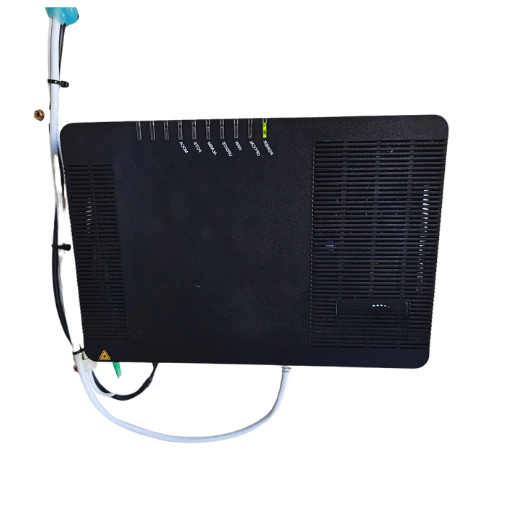
The proper functioning of an Optical Network Terminal (ONT) is vital during a power outage. Having an operational ONT means that there’s internet connectivity. Most ONTs have a rechargeable battery built in that can provide temporary power. In order to maximize uptime, ensure that the battery is in good condition and fully charged beforehand. For prolonged outages, an uninterruptible power supply (UPS) can be used for the ONT and other important devices. Backup systems should be tested and maintained routinely. Should the backup battery be inoperable, reach out to your internet service provider for replacement options or further guidance to sustain the optical fiber infrastructure.
Diagnose the ONT for any loose physical connections as well as any physical damage, such as frayed or disconnected cables, if there are any connectivity issues. Check whether the ONT’s power supply is operational and that the correct lights are illuminated, as explained in the user guide. Power cycle the ONT by disconnecting it from the power for half a minute and then plugging it back. In case issues remain unresolved, it is best to contact your ISP to confirm if there is any service disruption in your locality. For more complicated issues with the system, it is best to arrange for a qualified technician who can troubleshoot and fix the system.
The ONT power supply is one of the devices that ensures the seamless functioning of the device at all times. Its integral operations involve providing electric power to the ONT so as to help in sustaining internet use. The power supply should always be plugged into a working electrical outlet to prevent any disconnections. In the event of an outage, the backup battery will sustain power long enough to curb the disruption to your telecom services. Inspect your power supply routinely for any signs of damage and loose wires. In the case where the power supply does not work, reach out to your internet provider for assistance or replacement.
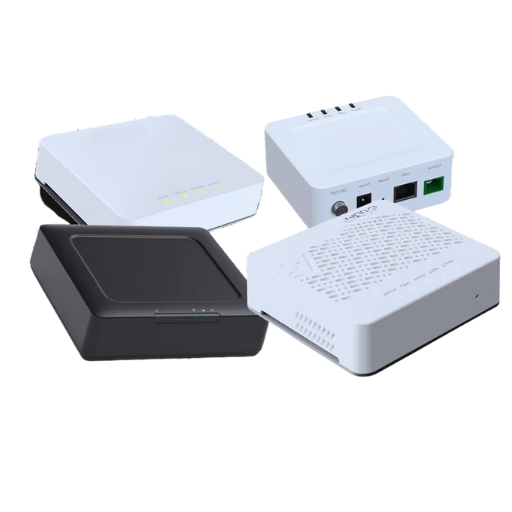
A common type of standard for fiber optic communication is GPON or ‘Gigabit Passive Optical Network’. It allows multiple users to connect to the internet via one optical fiber, which enables GPON to maintain high-speed data transmission. The GPON standard will affect the ONT (Optical Network Terminal) with the way it manages and transfers data from and to the user’s location and the internet service provider. The ONT is the terminal that receives the GPON signals and then decodes them into usable internet, voice, and TV services. Its compatibility with GPON guarantees fast, reliable, and scalable connectivity which are essential features for modern fiber optic networks and multiple other applications.
As a result of increased data processing and network efficiency required by 5G, the evolution of ONT devices is changing, prompting the development of new technologies. To meet the new bandwidth, and seamless integration with fiber optic networks, integration of high-speed and low-latency functionalities of 5G into ONTs is essential. This suggests improving hardware performance and facilitating compatibility with hybrid network infrastructures incorporating 5G wireless and fiber optics. These devices are smart ONTs which ensure that these next-generation devices are still critical in providing next-level connectivity.
The past few years have seen astounding progress with Ulta fiber internet advancement in fiber optics technology and the global demand for faster internet connectivity. These enhancements include the development of the 10 Gigabit Passive Optical Network (XGS-PON) technology which facilitates download and upload speeds of up 10 Gigabits per second. It is a giant leap towards having unparalleled experience in gaming, telemedicine, remote working, and 4K/8K streaming which ensures the modern necessity for dependable high capacity networks is fulfilled.
Moreover, the implementation of Dense Wavelength Division Multiplexing (DWDM) enables multiple optical signals to travel simultaneously over the same fiber strand, significantly increasing the bandwidth potential of fiber optic cables. In addition to this, it enhances the current infrastructure utilization which lowers the cost for internet service providers (ISPs) and, in turn, increases the speed for end users.
Various countries are making big investments in the nationwide fiber infrastructure. South Korea has nearly achieved universal coverage of gigabit-enabled fiber optics and leads the charge while the United States and the European Union are trying to implement the fiber in rural areas via government-funded programs. The adoption of fiber is further incentivized due to research showing that fiber networks are 50% more energy efficient compared to traditional copper cable networks.
The integration of advanced AI and machine learning algorithms in self-optimizing networks promises to revolutionize the optimization of ultrafast fiber internet. These algorithms will proactively track and adjust network performance by eliminating delays and fixing bottlenecks without the need for human supervision. All these elements, combined with other factors, ensure that ultrafast fiber internet remains the most reliable option for scalable and future-proof connectivity.
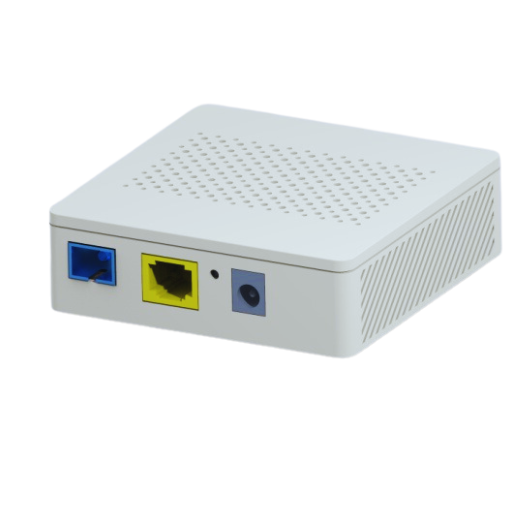
A: An Optical Network Terminal (ONT) is responsible for changing the optical signals that come from the fiber network into electrical signals that can be utilized by specific devices. It is a very important part of a passive optical network (PON) and serves as the bridge between the local area network of your office or home with the fiber optic infrastructure. An ONT is capable of receiving information in the form of pulses of light through an optical fiber and enables devices to utilize it by changing it into digital signals.
A: For standard cases, the answer will be yes. You must now have both an ONT and a router at your disposal. The ONT is expected to as the termination point for the connection that is fiber optically derived, while a router is required to establish and serve a local network and share the internet with several devices. Some internet service providers offer combined units of ONT and router, however, more often than not, the rest of the users will have to buy an additional router that is used for connecting to the ONT, which is usually via Ethernet cable.
A: Unfortunately, no. A cable modem cannot be used with fiber optic internet. Cable modems use coaxial cable networks which have a different infrastructure compared to Fiber optic internet. Fiber optic internet uses ONTs to convert optical signals into electrical signals. An ONT will be provided by your Internet Service Provider when you sign up for your fiber service.
A: There are main differences between ONTs and traditional modems. An ONT is an optical network terminal that, like a modem, transforms signals but takes it a few steps further. ONTs convert optical signals into electrical ones which can then be used within a local area network. Traditional modems, like DSL or cable modems, have different types of infrastructure and corresponding signals which they work with. ONTs are designed to be used with fiber-to-the-home (FTTH) or fiber-to-the-premises (FTTP) networks and have much higher bandwidth capabilities than traditional modems.
A: Generally, the answer is yes. This is usually the case because you are switching from one type of service to a different one and possibly a new service provider within the Datacom framework. This typically requires you to cancel your current cable account and get a new account with the fiber optic Internet provider who will install the needed ONT and other equipment.
A: Usually, ONTs are tailored to work within the specific network they are made for. For instance, a Verizon FIOS ONT may not work with other fiber networks. Most of the time, service providers make sure to provide the corresponding ONT to the fiber infrastructure in use. If you are changing service providers, or relocating to a new place, you will likely have to use the ONT given by the ISP in your new location.
A: Try to plug your ONT back in, or restart your ONT. If that does not work, systematically trace all connections to each peripheral device to make sure everything is connected where it is supposed to be. If everything is correct and the issue persists, reach out to the customer support service of your internet service provider. They can normally assist with configuration problems from a distance or dispatch a technician if needed. Do not attempt to open, or fix an ONT because it is usually the ISP’s property and you would not have the correct information on how to service it.
A: An EPON (Ethernet Passive Optical Network) ONT is one type of ONT used in some fiber optic networks. The distinction that sets it apart is the protocol that it uses to communicate over the fiber network. EPON uses Ethernet protocols which may be beneficial for already existing Ethernet-based devices. Other kinds of ONTs, for instance, those employed in GPON (Gigabit Passive Optical Network) systems, employ different protocols. Your ISP determines if your network incorporates EPON or other types.
1. Development of an FA ChatBot based on Retrieval-Augmented Language Modeling
Important Results:
Research Technique:
2. Chatbot MEDGPT: A Retrieval-Augmented Generation-Based Large Language Model For Assisting In The Diagnosis of Physical And Mental Health Conditions
Major Outcomes:
Methodology:
3. Streamlining Information Retrieval Using a Chatbot Application
Key Findings:
Methodology: